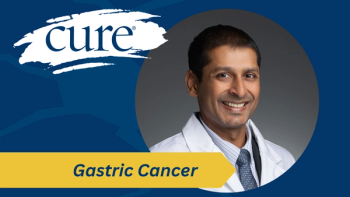
Expert: Regulating Medical Marijuana Will Ensure More Effective Pain Management
Chronic pain is a serious side effect of many cancer treatments. Medical marijuana is currently being suggested as an alternative option to traditional opioid medications.
Chronic pain is a serious side effect of many cancer treatments. Medical marijuana is currently being suggested as an alternative option to traditional opioid medications.
“The only tool for chronic pain that we have is opioid medication, which has many challenges,” said Jerry W. Mitchell, M.D. “They can be effective pain-control agents, but have many downsides. We need more tools for chronic pain, such as medical marijuana.”
In a study that was published in the New England Journal of Medicine, researchers concluded that marijuana was effective in reducing seizures for patients with Dravet syndrome. The median frequency of convulsive seizures per month decreased from 12.4 to 5.9 with marijuana compared with a decrease of 14.9 to 14.1 with placebo.
Please provide an overview of your talk on medical marijuana.
In an interview with CURE® at the 2017 OncLive® State of the Science SummitTM on Hematologic Malignancies, Mitchell, a hematologist at Mount Carmel Health System, discusses the use of medical marijuana as a chronic pain relief for patients with hematologic malignancies ad other tumor types.
One of the key points from my presentation is that marijuana is not one medicine; it is 85 different medicines. What matters is the concentration of tetrahydrocannabinol versus the concentration of cannabidiol. That ratio differs based on what type of plant or material you have and how it's being taken in. It emphasizes the importance of having a regulated market because, otherwise, it is hard to get a consistent product.
Can you explain medical marijuana from a palliative care standpoint?
I also wanted to emphasize that there are good randomized data for marijuana. It's been shown to be effective in Dravet syndrome, which is rare. There are 23 trials that have shown its effectiveness for chronic pain.
The biggest area that we have data for its utilization is in chronic pain. I treat patients with cancer as an oncologist, but I also treat patients for palliative care that are primary patients with cancer. The only tool that we have for chronic pain is opioid medication, which has many challenges. They can be effective pain control agents but have many downsides. We need more tools for chronic pain, such as medical marijuana.
What is the current state of medical marijuana in Ohio and how it be used?
Like any tool, it must be used in its right place. It's not going to be effective for everybody, but what is important is that the medical marijuana comes from a regulated environment so that you know exactly what you’re getting.
I am practicing in Ohio and am currently serving on the Ohio Medical Marijuana Advisory Board, which is implementing the new medical marijuana laws in Ohio. I have a good understanding of this state but, right now, all the laws are state by state.
The substance is still illegal from a federal level, but all the states have made their own laws. In Ohio, it is not going to be legal recreationally, it will only be legal upon the recommendation of a physician who has an endorsement on their medical license. It can only legally be obtained through the system that the state has set up, which tracks the marijuana from seed to sale from the cultivators to the dispensary. It is going to be electronically followed with the patient and the physician. It's a very good regulatory structure. They're going to test the product so you'll always know exactly what you're getting.
How difficult do you think it will be for this to spread nationwide?
The state of Ohio has done a good job of making sure that this market is regulated and that the patients know what they're getting.
In my opinion, the only way that it is going to be able to spread nationally is a different look from the federal level. Since it is still illegal at the federal level, this causes many problems with patients and their healthcare providers. They might have to worry about the federal dollars they receive, either from a grant for the institution or from CMS.
Are there any patients with specific tumor types who might benefit the most?
It also prevents access to the banking system, which has similar issues. For this to be seen nationally, something must change at the federal level.
Of those 23 trials, what were the overall results of medical marijuana and how were the trials designed?
We currently don’t know; however, it is possible, since there are many different types of pain associated with each tumor type. Part of the problem is that we don't have good trials since it is only legally available from one institution; therefore, it is difficult to get the product. This might change if medical marijuana was a Schedule 2 drug, as it would allow better research and better data. This would help all of us because there are a lot of claims and many haven’t been evaluated, making it difficult to say whether it’s effective until you put it to rigorous scientific evaluation.
The biggest randomized trial that has come out recently was in Dravet syndrome looking at seizures, which was published in the New England Journal of Medicine. This trial demonstrated that marijuana reduced the seizure rate. It was a small trial with a small number of patients, but there were clearly side effects. Some of the patients, particularly pediatric patients, couldn't tolerate the side effects. Most of the chronic pain trials have been done overseas, so it is hard to extrapolate as most of the trials are not as vigorous as I would like.
Is there anything else that you would like to add?
If you look at these trials in a collective fashion, it is clear that there is an effect for chronic pain. Last year in the United States, we had 62,000 deaths from opioids. Having another tool in our toolbox for chronic pain for patients who are suffering from cancer is important, especially when there has never been an overdose death linked with it.
I want to emphasize that when you get a product outside of a regulated market place, you do not know what you’re getting. I do not advise patients who maybe in states where there isn’t a market place, to get this on the street. We are seeing many of these products be adulterated with other things that can be very harmful. I would highly advise against doing that.





